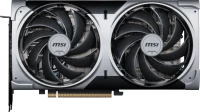For low-cost gamers: Top 5 low-cost graphics cards under $250
We independently test the products and technologies that we recommend.

In a special table, you can compare the technical characteristics of all five review video cards. And at the link you will find the entire catalog of video cards.

About the GeForce GTX 1650 SUPER, we are unlikely to tell something new. A card based on the 12nm Turing microarchitecture has replaced the regular GeForce GTX 1650, depriving it of any point in buying it. An increase of 30 - 35% of power for the same money - who will refuse this?
The guys from Palit have further developed the principle of "more performance for less money." Their variant of the 1650 SUPER called StormX OC is one of the most affordable versions of this graphics card. In addition, instead of a dual cooler, they used a simplified Cooling system with a single cooler, an aluminium radiator and only three copper heat pipes. Considering that the card is already quite cold, the reduced dimensions give room for manoeuvre, this one can be used with a compact microATX motherboard and a Cube Case. The cooler seemed a little noisy to us, but this is treated in the Palit ThunderMaster proprietary utility by a slight decrease in the number of revolutions. If the extra noise does not bother you, then you can squeeze an additional 5-7% out of the existing chip and memory through manual overclocking.
And now from numbers to business. Despite the budgetary status of the Palit GeForce GTX 1650 SUPER StormX OC, it drags well in modern toys. Especially if you put aside the maniacal desire to run absolutely everything on Ultra settings and 4K resolution. So, in conjunction with the Ryzen 5 2600 at high graphics settings and optional anti-aliasing, we got the following picture: an average of 74 frames per second in Gears oF War 5, 47 FPS in RDR2 and 95 FPS in Battlefield 5. As you can see, if you do not increase the resolution so you can play comfortably.

At the end of 2019, AMD staged an art shelling of NVIDIA competitors by releasing a pack of new cards with the XT prefix. The "Greens" immediately responded with their SUPER line and in the segment under $200 an interesting jiu-jitsu championship began, where none of the opponents planned to give up. Six months later, the struggle continues, and the clear winner is still not clear. All this fully applies to the RX 5500 XT performed by Sapphire, which came to our review.
Recently, Sapphire has been closely associated with the Nitro line, in which reference cards are noticeably overclocked in the core and memory, placing serious demands on the power supply. In contrast, PULSE RX 5500 XT looks quite ordinary. And this is not a disadvantage. The fact is that overclocking the original Radeon RX 5500 XT does not make much sense, since the card starts to noticeably heat up, and the increase in megahertz from the GPU turns out to be very tiny. Therefore, instead of trying to squeeze all the juice out of this card, Sapphire engineers did not reinvent the wheel, but finalized what could be improved.
Compared to the main competitor GTX 1650 SUPER, in most games on the 1080p + High custom settings bundle, we see either parity or a slight advantage of NVIDIA's option. Overall, both cards put up decent performance and handle the hits of yesteryear and the few blockbusters of 2020 well. At the same time, PULSE RX 5500 XT wins due to a quieter cooler. Surely for someone it will be more important than the difference in a few FPS.

With the release of the Radeon RX 5500 XT, AMD was finally able to send the old Radeon RX 580/590 from the Polaris family on a well-deserved vacation. As tests have shown, with similar performance, new items have lower power consumption and heat dissipation. Immediately after the announcement of the reference RX 5500 XT, Gigabyte rolled out 2 variations of this card at once: a simple Radeon RX 5500 XT and an improved Radeon RX 5500 XT Gaming OC. The first variant seems more profitable to us, since it doesn't have unnecessary backlighting, the dimensions are smaller due to the use of two coolers, the operating frequency of the core is at the same level of 1845 MHz, and the price is slightly lower.
But there is another important nuance here. It's no secret that in nature there have always been clearly "red" and clearly "green" games that run better on video cards of one or another company. But if you put the RX 5500 XT and GTX 1650 SUPER in different corners of the imaginary ring and turn the graphics settings almost to the limit, a slight systematic lag of the RX 5500 is revealed. It seems that the RDNA chips manage the available 4 GB of video memory not as efficiently as the Turing family cards. But Gigabyte's test unit has a little trick up its sleeve; the 8GB version can be found for just $40 more than the 4GB version. And then NVIDIA will swallow the dust.
As a result, the performance will be enough to run most modern toys in Full HD resolution and graphics settings somewhere between "High" and "Ultra". In general, you can safely count on a stable 50 FPS even in the most demanding games like Red Dead Redemption 2, Assassin's Creed Odyssey, Metro Exodus and Gears 5. In this case, the only drawback of the card will be a weak overclocking potential. Although, this is not a problem with Gigabyte, but with Radeon itself.

At the sight of the old Radeon RX 580 in 2020, many will have a reasonable question, what the hell is she even doing in the top of the best video cards under $250? Wait a minute, we'll explain everything. The fact is that this option from Gigabyte is perhaps the most affordable video card with 8 GB of video memory, which can now be found in stores. For many modern games, 4 GB is already back to back, and a next-gen like Cyberpunk 2077 looms on the horizon, where 8 GB of video and 16 GB of RAM will be mandatory for a comfortable game. And despite its age, the Gigabyte Radeon RX 580 fits these requirements perfectly. And they ask for it exactly the same as for the GTX 1650 SUPER and 5500 XT with 4 GB.
The reverse side of the coin is the "gluttony" of video cards based on the Navi chip. Of course, it is not as brutal as that of the VEGA line, but it is significantly higher than that of the 2019-2020 models. If the average GTX 1650 SUPER is enough for a 350W power supply, then a minimum of 500W is required here. And better 550 W to leave a margin for overclocking. However, this can also be considered as a plus, by purchasing a good power supply with a margin in a couple of years, you can easily choose more powerful and modern components with a minimum regard for the power consumption limit.
As for everything else, this card from Gigabyte used to be a flagship model with all the consequences: an advanced WindForce 2X cooling system with asymmetric blades, a full-fledged RGB backlight with RGB Fusion 2.0 synchronization, a reinforced backplate and a pack of ready-made profiles for different overclocking levels. By the way, overclocking is another of its advantages over contemporaries. From the RX 5500 XT, few people manage to squeeze more than 5% on the core, but here you can count on an additional 10-15%. At the same time, the cooling system does an excellent job of keeping the temperatures of the components within the normal range and without emitting unnecessary noise. And in idle time, it goes into passive mode, reducing the noise level to the background.

The GeForce GTX 1650 SUPER was created to revitalize the low-cost gaming segment and challenge the models based on the Radeon Navi chip. It is designed to play in Full HD resolution with high graphics settings in most modern games, but in the near future it will surely run into problems due to the limited amount of video memory. Although, in its defense, we note that in general, NVIDIA Turing cards deftly juggle a limited number of gigabytes.
In terms of pure performance, it would be more correct to call it a stripped down version of the GeForce GTX 1660, rather than an improved GeForce GTX 1650. In fact, NVIDIA pulled off the same feint when they used a stripped down version of the GPU from the flagship RTX 2080 graphics card to create the RTX 2070 SUPER. The base frequency of the GTX 1650 SUPER VENTUS is 1740 MHz, the memory bus is 128 bits, instead of GDDR5 memory with an effective frequency of 8000 MHz, GDDR5 with 12000 MHz is used. To cool all this goodness, there is a pair of Ventus coolers with metal styling familiar to MSI fans. The cooling system is noisy within the norm, the small dimensions of the board allow it to be installed in a compact microATX case, and the low power consumption makes it possible to get by with a 350W power supply.
In terms of the ratio "dollar to FPS" this is one of the most profitable options that can now be found on sale. Especially if you add some firewood manually to a modest factory overclock. The test sample without problems managed to be fired up to 1980 MHz on the core. Surely, if additional power was connected, the numbers would be higher, but it was decided in principle to limit ourselves to a 350 W power supply. In any case, an increase of around 10% is an excellent result, which helped raise the number of FPS in Metro Exodus from 54 to a psychologically comfortable 60. At the same time, the level of noise and heating of the core hardly increased.
Articles, reviews, useful tips
All materials






























